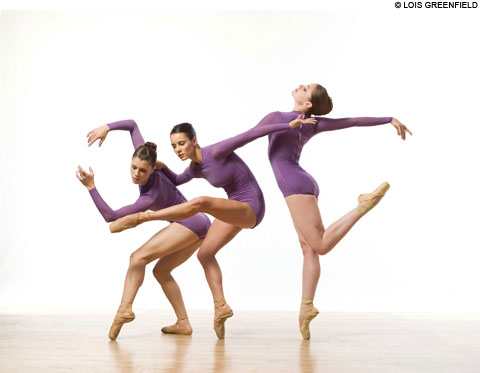
RED SWEET Elo’s piece, which hadn’t been seen in Boston, seemed hemmed in by Biber’s short phrases; it opened up when he switched to Vivaldi. |
Aspen Santa Fe Ballet — all of 10 dancers — blew into the Tsai Performance Center last weekend with a Celebrity Series program that included two choreographers — Jirí Kylián and Jorma Elo — who've been Boston Ballet staples of late. Talk about challenging the big boys (and girls) on their own turf. Still, ASFB — which was founded in 1995 by Bebe Schweppe, Jean-Philippe Malaty, and Tom Mossbrucker and splits its time between Colorado and New Mexico — has been called "a breath of fresh air" by no less than the New York Times' Anna Kisselgoff. And for at least two-thirds of the evening, the company, whose travels have taken it to the Joyce Theater in New York and Jacob's Pillow in Western Massachusetts, matched up pretty well.
Born in Barcelona and now living in Munich, Cayetano Soto has had two world premieres from ASFB, Fugaz in 2009 and then, last year, Uneven, whose title is his assessment of his mental state in the midst of a dizzying schedule. That was the Soto piece the company brought to Boston. Under a third-degree spotlight, with cellist Kimberly Patterson on stage playing David Lang's cicada-like score, a man in a white top and black shorts and a woman in a black leotard with a white top did a kind of tango apache with ice-dancing lifts, he manipulating, she eluding. That initiated the now familiar contemporary pattern of entering and exiting, partnering and repartnering, the five men and three women appearing in duos and trios, with hints of gagging and blindfolding. The music (some of it taped behind Patterson's live performance) thinned out and became more lyrical; the movement vocabulary remained constant. It ended, or rather stopped, with what's become a contemporary-dance cliché, the freeze frame.
Kylián's Stamping Ground (1983) was inspired by Aboriginal tribal dancing he witnessed on Groote Eylandt, in northeastern Australia, in 1980. With its opening section performed in silence (eventually Carlos Chávez's Tocata para instrumentos de percusión kicks in), it recalls the Sarabande section of Kylián's Black & White, but it's less about primal identity and more about movement identity. Dressed in a black bathing suit, Sela Rassenti emerged through the shredded-black-vinyl backdrop and began to express herself, shaking her shoulders like a bird about to take off, slapping herself, reverencing the wings, coiling and recoiling, folding and unfolding — poses with which to confront the universe. Two women and three men followed with their own solo variations; then the dancers cavorted with one another, played leapfrog, smacked their own butts as if they were on horseback, imitated push-pull toys (a Kylián trope), walked stiff-legged holding their toes. William Cannon leaned back, put both hands on the floor, and crabwalked; two men swung a woman like a pendulum à la Kylián's Symphony in D. The dancers didn't stamp much, but they did stay low to the floor, drawing their strength from the earth.